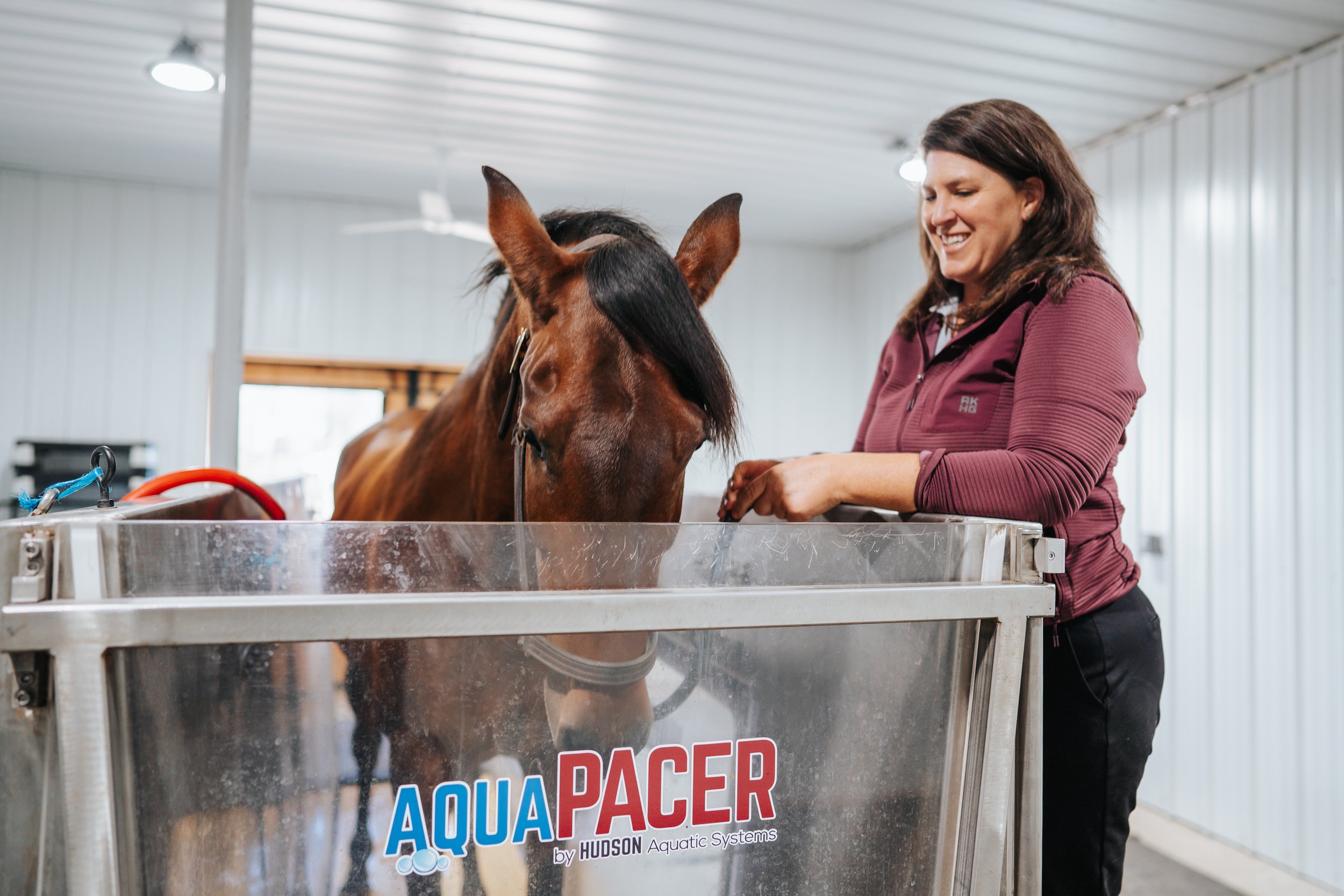Why water? The Theory Behind the Underwater Treadmill
Aquatic therapy has long been recognized as beneficial for rehabilitation in humans and it is rapidly gaining momentum for rehabilitation and conditioning in animals. Swimming is a commonly used therapy in humans, but in horses and some dogs, the swimming motion can often be erratic and forceful, especially in the hind limbs.
The underwater treadmill is a treadmill within an enclosure which can be filled with water. The height of the water, the temperature of the water and the speed of the treadmill can be adjusted for each individual case. Most importantly, it allows the animal to mimic a normal gait and posture during exercise while still reaping the benefits of the water.
So, what are the benefits of having water in the treadmill?
Buoyancy: Water provides buoyancy or near weightlessness, which reduces the concussive forces on joints, muscle and tendons. The degree of buoyancy depends on the amount of the body submerged in the water. Early after a significant surgery or injury, we may use a high water level to decrease weight on the healing limb. As healing progresses, we may gradually decrease the water to increase weight bearing on the limb.
Hydrostatic Pressure: This is the pressure exerted on the body by water. Much like compression socks, this pressure can decrease swelling and improve circulation in the limbs.
Resistance: Water molecules are cohesive, meaning they like to stick together. It requires force to break these molecules apart and this contributes to resistance. Moving a body through water causes turbulence (uneven water movement), which further contributes to resistance. The resistance experienced when walking in water provides excellent conditioning exercise, while keeping movement slow and controlled and while keeping concussion limited.
Temperature: Water temperature is important to consider in aquatic exercise. The temperature can be adjusted for each individual case and phase of rehabilitation or conditioning. Some animals may benefit from warmer water to loosen tight muscle or ease arthritic discomfort. Other animals may benefit from cooler water, which helps decrease heat and swelling associated with inflammation.
Water Height: The ability to adjust the height of the water for each individual case and stage of therapy is important. The level of the water affects how the horse moves on the treadmill. At low water levels, animals increase the height of each step to lift the limbs out of the water, increasing the flexion of each joint and altering engagement of the back. This helps with joint flexibility and also works a specific set of muscles. At slightly higher levels, the exercise becomes more about the resistance of the water and become more of a conditioning type workout. At even higher levels, we begin to see the effects of buoyancy which helps to take weight off an injured limb. The speed of the treadmill is carefully adjusted along with the water height to achieve the desired rehabilitation goal.
Another benefit of the underwater treadmill — Improving symmetry: Animals coming back from an injury will be especially weak on the injured side. Many sound animals also have a weaker side and a stronger side. During free exercise, they often travel unevenly or have one direction that is harder than the other. The enclosure surrounding the underwater treadmill is relatively narrow and helps keep them straight, working each side more equally. This conditioning translates to overground work, as a straighter, more even animal.
Uses for the Underwater Treadmill
The underwater treadmill is incredibly adjustable, making it useful for a wide variety of cases. The speed of the treadmill belt, the height of the water, the temperature of the water and the duration of exercise can all be adjusted to meet the needs of the individual animal.
The treadmill is a valuable tool in rehabilitation. It is useful for animals with:
Soft tissue injuries
Bone injuries
Joint inflammation
Arthritis
Post-surgical cases
Muscle weakness or loss of muscle
Neurologic Cases
Back pain
The treadmill is also unbelievably helpful for conditioning. We use it to help bring animals back to work after a period of time off. We also use it for horses in active training to supplement their regular exercise programs. We see dramatic changes in topline, overall musculature, stamina and strength. Riders frequently comment on how much more symmetrical their horse feels with consistent exercise in the underwater treadmill.
We are happy to discuss how underwater treadmill therapy may be helpful for your animal!
Reference:
King, Melissa R. “Principles and Application of Hydrotherapy for Equine Athletes.” Veterinary Clinics of North America: Equine Practice, April 2016, 115-126.


